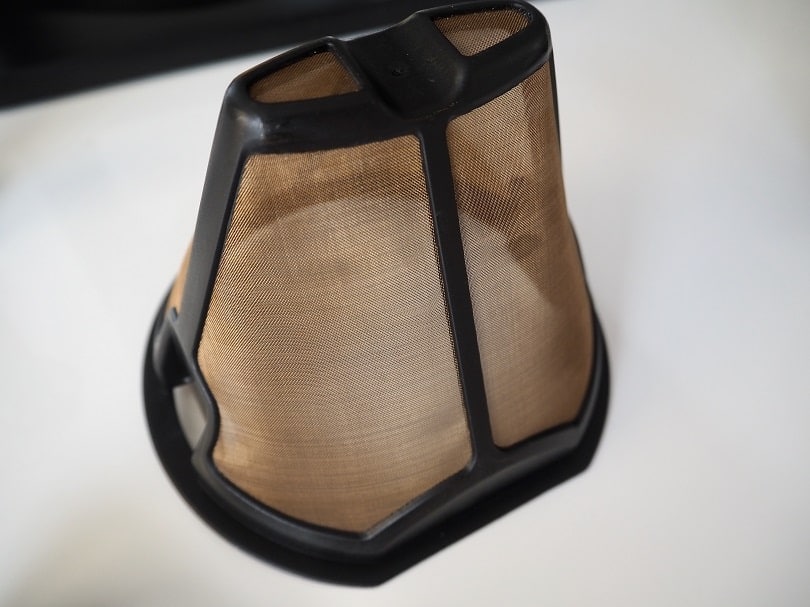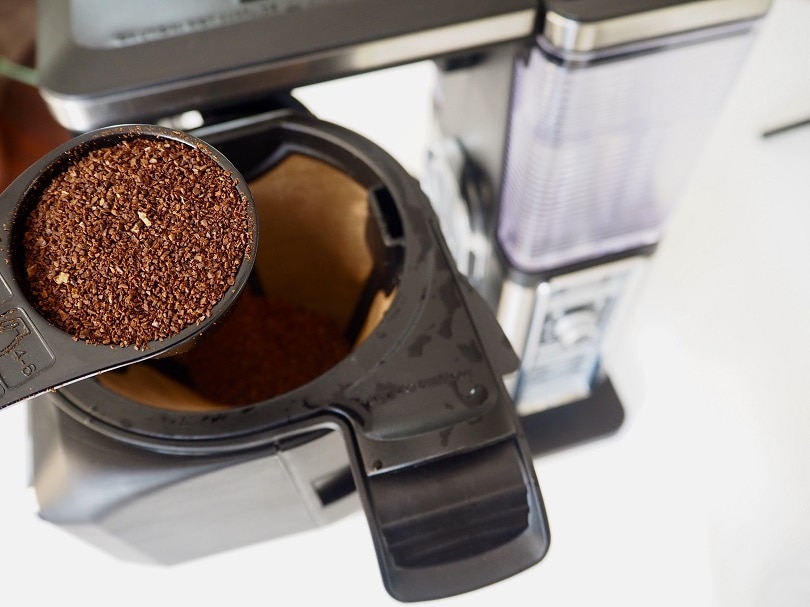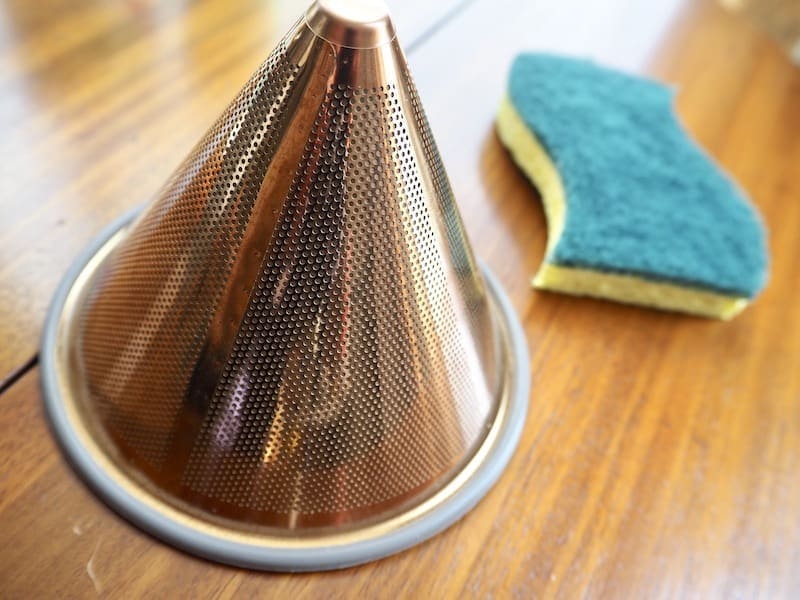
Using permanent coffee filters is simple, but there are a few things to keep in mind. Whether your drip machine came with a reusable filter or you are investing in one for an AeroPress or Chemex, we’ll show you how to get started!
Read on to see our guide to using permanent coffee filters in drip machines and pour-over brewers. And if you have questions, stick around for our FAQ!

How to Brew with a Permanent Coffee Filter
1. Set up your brewer
Whether you’re brewing with a Chemex or a drip machine like the Ninja Coffee Bar, the primary step is to get the brewer ready. If you are using a drip machine, add water to the tank, place the permanent filter in the filter basket, and make sure the carafe is in place. If you’re using a Chemex or other pour-over, start boiling water and place the reusable filter on top of the brewer.

2. Grind your coffee
Using a burr grinder if you have one, grind fresh coffee beans. Make sure you’re grinding to the right consistency for your brewer — medium for a drip machine and medium-fine for most pour-overs.
3. Pour the coffee grounds into the permanent coffee filter
Carefully add the coffee grounds to the permanent coffee filter. There’s no need to use a paper filter; just add the grounds straight into the mesh or perforated metal. Then tap gently to level the grounds.

4. Brew as usual
Now it’s time to brew your coffee! Push the start button on a drip machine or start pouring in your hot water for a pour-over. There’s no mystery about this step — just do what you usually do.
5. Clean your filter
Here’s where this process diverges from the paper filter version. Instead of throwing away (or composting) your filter and grounds, you’ll need to clean the permanent filter. Pick up your reusable filter and dump the grounds into your compost bin or trash can. You may need to use a spoon or spatula to get the bottom layer of grounds out. Be careful not to scrape or tear your metal filter!

Once the grounds are gone, you can thoroughly rinse the filter. Turn it upside down and spray water through the holes. You want to spray from the side that wasn’t holding the grounds! This way, you’ll get more of them out.
There’s no need to use soap every time you brew — you just want to make sure the filter isn’t clogged with oils or fine grounds. Then let the filter dry completely before putting it away.
READY FOR A DEEPER CLEAN? Here’s How to Clean a Reusable Coffee Filter

Frequently Asked Questions
Brewing coffee with a permanent filter isn’t difficult, but there are a few sticking points. Here are answers to the questions we get asked all the time.
Do you need a paper filter to brew with a permanent coffee filter?
No, you won’t need paper filters if you have a metal filter. The reusable filter replaces paper filters, making for a more eco-friendly option. On top of that, adding a paper filter to a reusable filter in a drip machine can cause it to overflow. Doubling the filters makes the water drain more slowly through the coffee grounds, resulting in much stronger coffee and a slow brewing speed that your machine may not be able to handle. You can manually adjust the water flow if you’re using a pour-over, but the coffee may still come out too strong.
SEE ALSO: Want to use paper filters and permanent filters together? Check out Hario’s innovative new pour-over brewer!
How does a permanent filter affect the brewed coffee?
Permanent filters are typically perforated metal sheets or fine mesh designed to catch the coffee grounds while allowing everything else to flow through. If you brew with a permanent filter, your coffee will be full-bodied with a thicker mouthfeel. The natural oils in the coffee beans will come through into your cup, giving you a richer flavor and fuller experience of the beans. On the other hand, you will also find quite a bit of coffee sediment, especially if you grind your beans too finely. All in all, you can expect a cup of coffee similar to French press coffee.

What are the downsides of using a permanent coffee filter?
Permanent coffee filters save you from having to buy paper filters — no one wants to resort to using a paper towel or napkin — and produce less waste. The flavors are stronger and richer, and there’s a lot more mouthfeel. However, recent research suggests that paper-filtered coffee is healthier because it filters out cholesterol-raising oils and compounds. Paper filters also produce clear, grit-free cups of coffee, whereas your permanent filter will likely make a murkier cup. Plus, you’ll have to put in a lot more time and elbow grease keeping your permanent filter clean!

Final Thoughts
We hope this guide has helped you understand how to use permanent coffee filters and answered a few key questions. Reusable filters can be a great option for quite a few brewing methods, but you do need to stay on top of the cleaning and avoid using paper filters, too. Enjoy your eco-friendly cups of coffee!
RELATED READS:
















